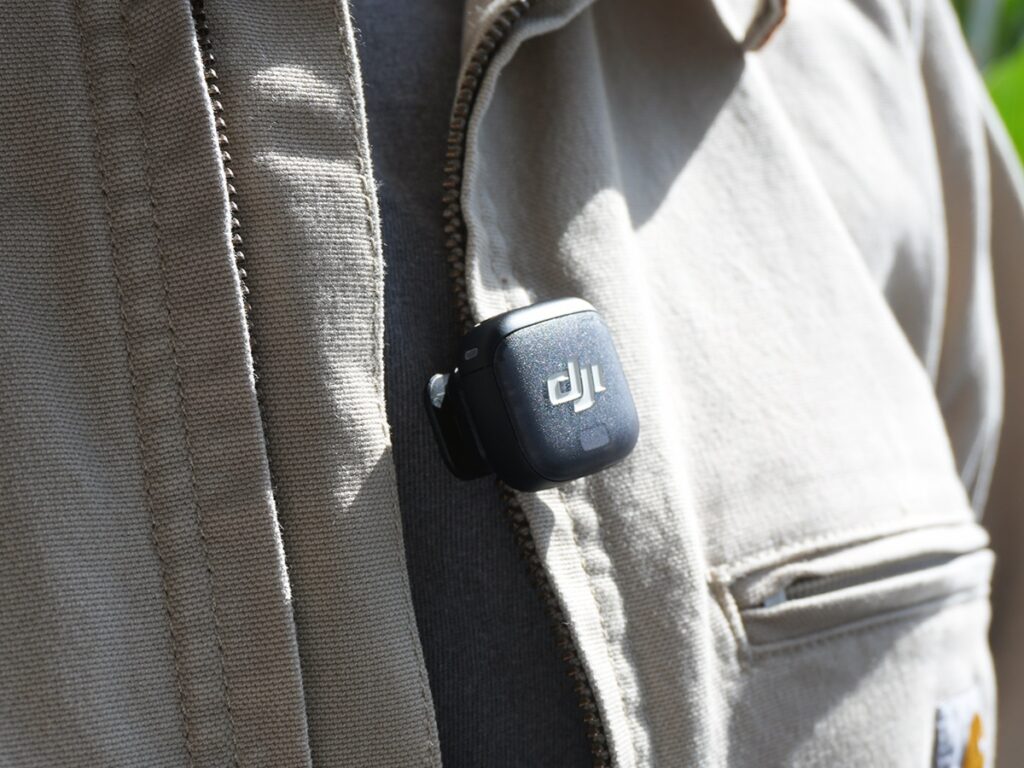
The DJI Mic 3 has emerged as a compelling option for content creators seeking to elevate their audio quality. Launched with a suite of features designed to cater to both amateur and professional users, it promises seamless integration with DJI products and Sony cameras. Yet, its price tag and certain design choices have sparked debate among potential buyers. This review delves into the capabilities, strengths, and limitations of the DJI Mic 3, offering insights into whether it truly stands out in a crowded market.
For those looking to enhance the audio quality of their social media or YouTube videos, upgrading to a high-quality microphone is often the most cost-effective solution. The DJI Mic 3 offers an ultra-compact design, four-transmitter connectivity, internal dual recording with 32-bit float, and impressive battery life. However, the absence of a 3.5 mm lapel connection on the transmitters may deter some users.
Key Features and Specifications
The DJI Mic 3’s standout feature is its adaptive gain control, which automatically prevents audio clipping. It supports dual-file 32-bit float internal recording with 32 GB of storage, and its 4TX + 8RX capability allows for up to four transmitters and eight receivers. This makes it particularly appealing for creators involved in group interviews or podcasts.
- Transmitters: Up to 4 (clip or magnetic attachment)
- Receivers: Up to 8 supported (1 included in base kits)
- Internal Storage: 32 GB (approx. 30+ hours of recording)
- Audio Output: Lossless 48 kHz / 24-bit to receiver
- Range: Up to 400 m (line-of-sight, dual-band 2.4/5 GHz)
- Battery Life: 8h (transmitter), 10h (receiver), 28h with case
Despite these impressive specs, the lack of a 3.5 mm lapel connection is a notable omission, especially for users accustomed to the flexibility offered by previous models like the DJI Mic 2.
Pricing and Market Position
DJI has typically positioned itself as a cost-effective alternative to competitors, but the Mic 3 bucks this trend. Starting at AUD$569 for the bundle with two transmitters, one receiver, and a charging case, it is priced higher than many expected. For solo creators, a more affordable option at AUD$369 is available, though it lacks the charging case.
- 2 TX + 1 RX + Charging Case: AUD$569
- 1 TX + 1 RX: AUD$369
- Receiver only: AUD$219
- Transmitter only: AUD$189
The closest competitor, the RODE Wireless Pro, offers a similar package with dual-channel receivers and lavalier mics for around AUD$535, making the DJI Mic 3’s pricing a point of contention.
Design and Usability
The DJI Mic 3’s design is sleek and lightweight, weighing just 16 grams per transmitter. It can be clipped to clothing or attached magnetically, although the prominent DJI logo on the magnet may not appeal to everyone. The receiver is compact and features a scroll wheel for quick gain adjustments, though its small size makes it easy to misplace without the charging case.
Colorful windscreens are available to reduce noise and blend with attire, enhancing the microphone’s discreetness when worn externally. However, the absence of a lavalier attachment raises questions about the brand’s future plans, possibly hinting at a DJI Mic 3 Pro in development.
User Experience and Connectivity
While the audio quality of the DJI Mic 3 is on par with its competitors, its ability to support up to four transmitters and eight receivers in Quadraphonic mode is a significant advantage. This feature is particularly beneficial for complex audio setups, such as group interviews or podcasts, where multiple audio tracks are required.
The 1.1-inch OLED touchscreen allows users to navigate settings easily, offering options for gain control, noise cancellation, and more. The automatic frequency hopping between 2.4GHz and 5GHz bands ensures stable connections over a range of up to 400 meters.
Performance and Quality
In practical use, the DJI Mic 3 excels when paired with DJI cameras like the Osmo Action 5 Pro or Osmo Pocket 3, delivering high-quality 48kHz 24-bit audio. However, iPhone users may need to use third-party apps like the Black Magic camera app for optimal performance, as the mic does not integrate with the native camera app.
For professional settings, the Mic 3’s 32-bit float recording and timecode functionality facilitate precise audio editing in post-production. Despite these advanced features, the lack of a lavalier input remains a puzzling choice.
Final Verdict
The DJI Mic 3 is a robust option for content creators seeking high-quality audio with versatile connectivity. Its compact design and ability to connect multiple transmitters are significant advantages. However, the decision to exclude a 3.5 mm input may limit its appeal to professional videographers, who might prefer alternatives like the RODE Wireless Pro.
Ultimately, the DJI Mic 3’s strengths lie in its seamless integration with DJI’s ecosystem and its potential for future enhancements. As the market evolves, it remains to be seen whether DJI will introduce a Pro version to address current limitations.
Note: The author of this article, Ben McKimm, received a DJI Mic 3 for review purposes. All reviews at Man of Many are conducted independently. DJI did not review this article before publication.






